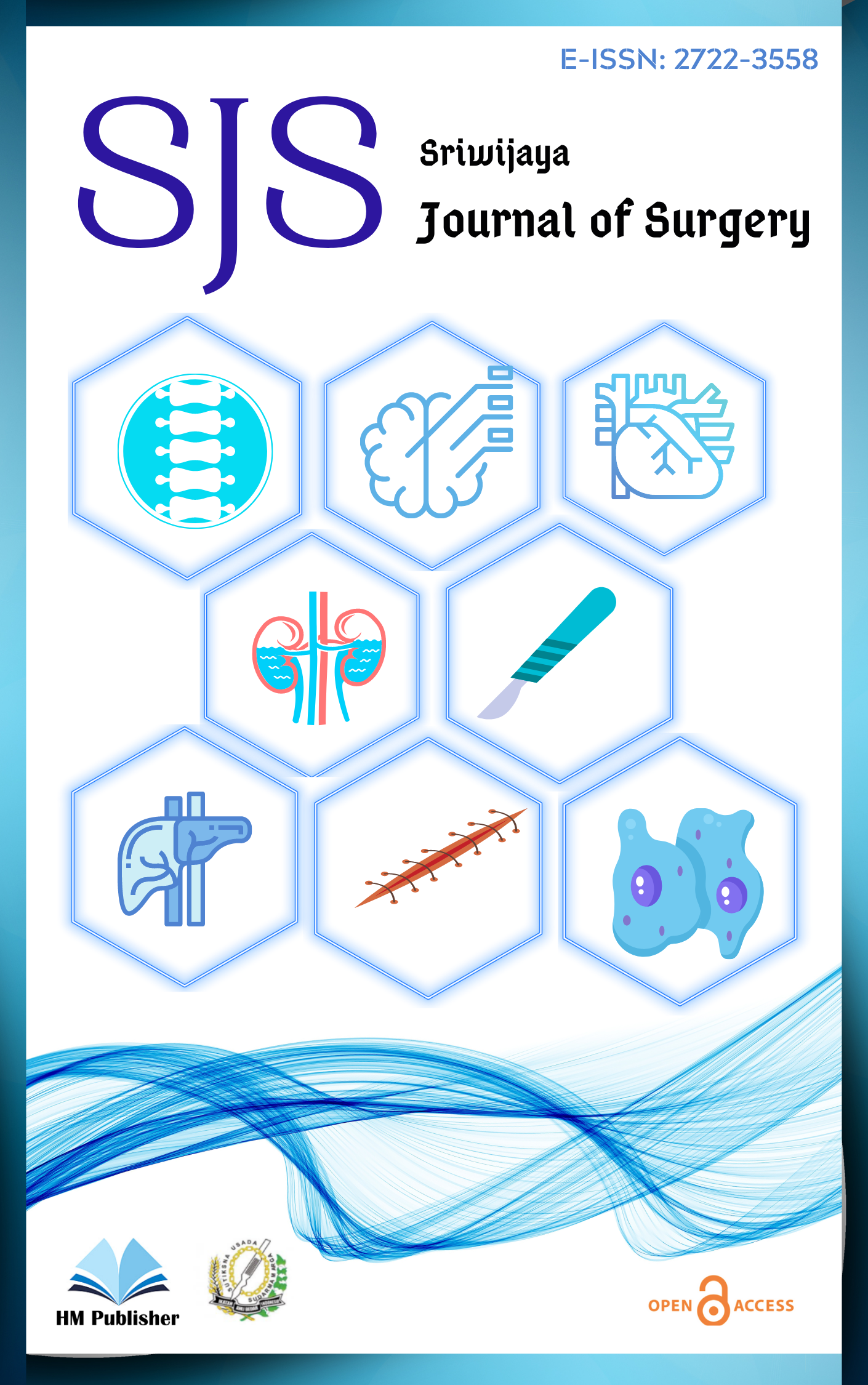Main Article Content
Abstract
Introduction: Anastomotic leakage (AL) is a devastating complication in colorectal surgery, associated with high rates of morbidity and mortality. Accurate preoperative risk stratification is essential for guiding clinical decision-making. This study aimed to evaluate the diagnostic accuracy of a synergistic model combining the clinical Colon Leakage Score (CLS) with the biochemical marker of preoperative serum albumin for predicting AL in an Indonesian patient cohort.
Methods: A retrospective diagnostic accuracy study was conducted at a single tertiary care center. The study included 60 patients who underwent resection and primary anastomosis for colorectal cancer between January 2022 and June 2024. Patients who received a diverting stoma were excluded. A "high-risk" status was defined by a composite criterion: a CLS > 11 and a preoperative serum albumin level < 3.5 g/dL. The primary outcome was clinically significant AL. Following the identification of inconsistencies in the initial analysis, a complete data re-analysis was performed. Sensitivity, specificity, positive (PPV) and negative (NPV) predictive values, and overall accuracy, with 95% confidence intervals (CI), were calculated.
Results: The incidence of AL was 21.7% (13/60 patients). A striking 71.7% of the cohort presented with preoperative hypoalbuminemia. The analysis revealed that the combined model demonstrated poor sensitivity of 46.2% (95% CI: 19.2% - 74.9%) but excellent specificity of 97.9% (95% CI: 88.7% - 99.9%). The model yielded a high PPV of 85.7% (95% CI: 42.1% - 99.6%) and a robust NPV of 86.8% (95% CI: 75.0% - 94.6%). The overall accuracy was 86.7%.
Conclusion: The combined CLS-albumin model functions as a highly specific "rule-in" test, not a general screening tool. While it fails to identify more than half of the patients who will leak, a positive result correctly identifies a small subset of patients at extremely high risk for anastomotic leakage. The findings also highlight a profound baseline burden of malnutrition in this population, which warrants further investigation and clinical attention.
Keywords
Article Details
1. Authors retain copyright and grant the journal right of first publication with the work simultaneously licensed under a Creative Commons Attribution License that allows others to share the work with an acknowledgement of the work's authorship and initial publication in this journal.
2.Authors are able to enter into separate, additional contractual arrangements for the non-exclusive distribution of the journal's published version of the work (e.g., post it to an institutional repository or publish it in a book), with an acknowledgement of its initial publication in this journal.
3.Authors are permitted and encouraged to post their work online (e.g., in institutional repositories or on their website) prior to and during the submission process, as it can lead to productive exchanges, as well as earlier and greater citation of published work.

